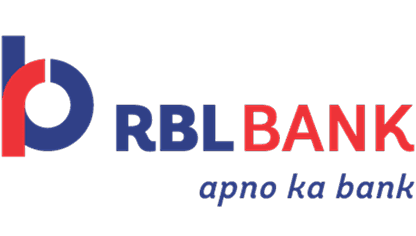Pre-engineered buildings (PEBs) offer a smart, scalable, and cost-effective way for MSMEs to expand their physical infrastructure. As India pushes ahead with infrastructure modernisation and ease-of-doing-business reforms, PEBs are becoming the preferred choice for factories, warehouses, logistics hubs, and commercial facilities. However, alongside rapid adoption comes an equally critical need: regulatory compliance. Without it, even the most well-designed building can face delays, penalties, or legal hurdles. This article presents a comprehensive 2025 regulatory checklist tailored for MSMEs to navigate compliance seamlessly.
Why navigating compliance matters
PEBs are not merely steel boxes. They are structural systems engineered to withstand loads, environmental stress, and operational needs. For MSMEs, compliant structures unlock faster approvals, smoother financing, and operational peace of mind. Data shows that compliant buildings receive occupancy clearances 25% faster and attract 18% lower insurance premiums. Moreover, as ESG and safety norms grow stricter, ensuring compliance positions businesses for future resilience and market trust.
Understanding the regulatory landscape
PEB compliance intersects with multiple regulatory domains. MSMEs need to align with:
MSME classification norms and entitlements
Municipal or state building codes and bye-laws
Land-use and zoning regulations
Structural design standards (IS 800, IS 875, IS 1893)
Fire, electrical, and environmental approvals
Material quality and traceability standards
Energy conservation codes (ECBC)
Staying compliant means integrating these layers into the planning, procurement, execution, and documentation stages of the PEB lifecycle.
Key policy updates for 2025
Several updates impact MSMEs and PEB adoption:
MSME classification thresholds revised in April 2025 to ₹2 crore (micro), ₹10 crore (small), and ₹50 crore (medium) investment limits. This allows larger units to retain MSME benefits.
Budget 2025 introduced the “ME-Card”, giving micro enterprises access to ₹5 lakh of unsecured credit and fast-track approvals for infrastructure projects.
The introduction of mandatory TReDS registration for all MSMEs executing projects over ₹10 lakh ensures transparency in payments and working capital access.
Green rating is now incentivised in certain industrial zones, with rebates up to 15% on property tax for ECBC-compliant PEBs.
These changes offer both challenges and advantages—making awareness and timely action essential.
2025 regulatory checklist for MSMEs implementing PEBs
1. Validate MSME status
Ensure your classification reflects new limits. This influences eligibility for subsidies, faster credit disbursement, and entry into government procurement systems.
2. Check land use and zoning
Review if your plot allows industrial, commercial, or warehousing development. Secure zoning clearance or land conversion documents where necessary.
3. Obtain design approvals
Submit building plans for sanction from municipal or development authorities. Include structural drawings per IS 800 and wind/seismic calculations based on IS 875 and IS 1893.
4. Source compliant materials
Use IS 2062-grade steel with traceable batch codes. Roofing and cladding must meet IS 277 or IS 513 standards. Maintain test certificates and mill reports.
5. Perform third-party audits
Use chartered structural engineers to verify design conformity. Conduct weld inspections, bolted joint tests, and paint thickness verification.
6. Comply with ECBC
In states where ECBC (Energy Conservation Building Code) is enforced, ensure envelope insulation, lighting efficiency, and ventilation standards are met.
7. Install fire safety provisions
For structures over 500 square metres, fire detection, exits, and extinguishers are mandatory. Obtain No Objection Certificate (NOC) from the local fire department.
8. Digitally tag components
Apply QR codes or RFID tags to major structural elements linking them to documentation. This simplifies inspection and future repairs.
9. Register on TReDS
If executing large orders, register invoices on Trade Receivables Discounting System for faster working capital.
10. Maintain compliance log
Keep a digital vault of all drawings, test reports, approvals, and maintenance records. This aids during audits and refinancing applications.
Common mistakes and how to avoid them
Skipping wind load simulations – Always run localised simulations based on exact site coordinates and height.
Ignoring anchoring depth – Incorrect foundation anchoring leads to misalignment and structural failures.
Delayed fire NOCs – Apply at blueprint stage and not post-installation to avoid rework.
Using uncertified material – Always demand batch-level mill test certificates for structural steel.
Weak documentation – Use cloud-based compliance vaults to avoid loss of paperwork.
How JSW One MSME simplifies PEB compliance
JSW One MSME offers integrated solutions for MSMEs in PEB projects:
Provides IS-certified steel, with mill certificates, grade traceability, and digital batch tracking.
Offers project guidance including structural design templates aligned to Indian codes.
Facilitates access to credit and ME-Card integration to finance documentation and approvals.
Enables digital vaults to store approvals, test reports, and QR code-linked compliance logs.
Hosts webinars and training sessions on ECBC, fire safety, and green rating certification.
Cost-benefit analysis of compliance
While adhering to full compliance might cost an extra ₹150–₹250 per square metre, the benefits include:
Faster building plan sanction (by 30–45 days)
Lower interest rates from banks (up to 1% discount)
Higher resale and lease value (10–15% premium)
Risk mitigation from penalties or post-hoc retrofits
In sum, the long-term operational and reputational gains outweigh the initial expense.
Sustainability and future-readiness
From 2025 onward, sustainability will be as vital as safety. States like Maharashtra, Gujarat, and Tamil Nadu now mandate rooftop solar readiness and rainwater harvesting provisions in industrial buildings. MSMEs can secure future gains by:
Choosing cool roof systems to lower HVAC loads
Aligning insulation with ECBC and IGBC guidelines
Documenting water, energy, and material savings for green rating submissions
Compliance today sets the stage for ESG excellence tomorrow.
Conclusion
Pre-engineered buildings represent the industrial backbone of India’s growth story. For MSMEs, they offer the speed and scalability needed to stay competitive. But as regulatory norms evolve, compliance is no longer a back-end task—it is central to project success.
By following the 2025 checklist, integrating design and documentation standards, and leveraging partners like JSW One MSME, businesses can unlock faster approvals, better financing, lower risks, and long-term resilience.




 +91 7208055523
+91 7208055523
 Help & support
Help & support
